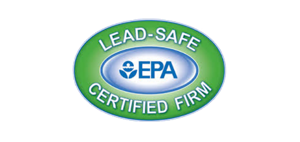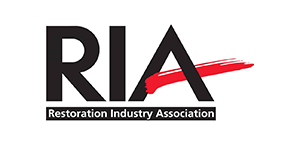Ever seen a dark stain on your ceiling and wondered if it’s roof water damage? Roof water damage often hides behind subtle signs that many miss. Knowing what to look for can save you from expensive repairs.
Spotting roof water damage early is key. Ignoring it can lead to big problems like structural damage and health risks. Look out for stains, peeling paint, and mold. These signs mean you might have a roof issue that needs fixing fast.
Key Takeaways
- Roof water damage symptoms often include stains, peeling paint, and mold growth.
- Water stains can result in repair costs ranging from $1,100 to $4,000.
- 45% of mold and mildew cases are linked to roof water damage.
- Corrosion is another common issue, particularly for metal roofs, costing between $400 and $2,000 to fix.
- Severe roof water damage can compromise indoor air quality and structure integrity.
Common Signs of Roof Water Damage
It’s important to know the signs of roof water damage to keep your home safe and strong. Homeowners should watch for signs of roof water damage. Some common indicators include:
- Water Stains: Look for dark, yellowish marks or rust-like spots on ceilings and walls. These are usually caused by water leaking through the roof or holes in the exterior.
- Mold Growth: Water that gets into the roof can cause mold on exterior walls. This is dangerous for your health, especially in damp places like basements and bathrooms.
- Distorted or Damaged Shingles: If shingles curl, buckle, or break, your roof is more likely to leak. Replacing them can prevent expensive repairs later.
- Damaged Flashing: Flashing problems are a common cause of leaks. Check for cracks or rust to catch issues before they become big problems.
- ‘Shiners’: When light shines through shingles or wet surfaces, it means water is getting in. This needs quick attention and repair.
- Water Stains in Attic or Crawl Space: Stains in these areas mean you have roof leaks. Fixing them fast is key to avoid bigger problems like rust or mold.
- Damaged Ceilings: Holes, openings, or rotting ceilings are signs of water damage from leaks. Inspecting and patching them is crucial to stop more damage.
- Musty Smells: If you smell musty and see swelling or deformation in walls, ceilings, and floors, it means there’s water inside. This is a sign you need to act fast.
Finding roof water damage early can save you time, money, and stress. It helps avoid bigger problems and health risks. Spotting damage early and fixing it quickly can save you money and keep your home safe.
Visual Cues of Roof Water Damage
Spotting roof water damage early is key to avoiding big repair costs. Stained ceilings often signal a roof leak. Look for circular or irregular stains on your ceiling, which mean leaks.
A brown, yellow, or copper stain on your ceiling is a sign of a roof leak that’s been ignored for too long. It’s crucial to act fast.
Mold and mildew are signs of too much moisture, often from a hidden roof leak. Checking for water damage is important to fix it right. Wet insulation means your home uses more energy, so check your roof often.
Look for stains, soft spots, or warping on ceiling joists and rafters. Water damage can cause mold and decay, shortening your roof’s life. Finding where the leak starts is important.
Florida’s weather, with long thunderstorms, makes a strong roof even more important. Water damage can come from bad water drainage, damaged flashing, or shingles. Flat or low-sloped roofs are especially at risk.
Regular checks should look at flashing, roof deck, gutters, and areas near chimneys or skylights. Look for rot, damage, or corrosion.
Spotting roof water damage early helps avoid big repair costs. Missing or damaged shingles after storms mean your roof is exposed. Clean your roof regularly to prevent damage and keep your home safe.
Identifying Roof Water Damage
Spotting roof water damage starts with knowing the signs and what they mean. Homeowners should check their roofs often, especially after bad weather. This helps find problems early. Here are key things to look for:
- Damaged Plumbing Vent Boots: These can let water in along the pipes, causing hidden leaks.
- Roof Vent Issues: Bad vents can let water in, which might not be seen until it’s too late.
- Step Flashing: Checking the step flashing at roof and wall corners is crucial. Damaged or rusty flashing can let water into the house.
Homeowners should also watch for mold on walls or stains around fixtures. These signs often mean there’s a hidden leak. It’s important to know the signs of water damage in different parts of the house:
- Ceiling: Look for peeling paint, water rings, mold, sagging, stains, musty smells, and soft drywall.
- Walls: Discoloration, paint cracks, soft spots, musty smells, and water rings can mean water is getting in.
- Floors: Buckling, warping, discoloration, cupping, crowning, musty smells, and mold growth are clear signs of water damage.
The process of checking and fixing damage includes:
- Detailed damage assessment.
- Stopping the water source.
- Classifying the water type.
- Identifying hazards.
- Inspecting the property.
- Protecting furniture and belongings.
Quality Restoration technicians are ready 24/7, 365 days a year. They respond quickly to water damage. Regular roof checks, especially after bad weather, and acting fast can keep your roof in good shape.
Conclusion
Knowing the signs of roof water damage is key to a safe home. Spotting damage early can save a lot of money and hassle. Regular checks, both by you and professionals, help catch problems fast.
Look out for signs like peeling paint, water stains, musty smells, and mold. Catching these early can stop bigger problems like sagging ceilings. Using tools like thermal cameras can help find leaks and check the roof’s health.
Getting a pro to check your roof is a smart move. They can find and fix problems quickly. This keeps your home safe and your life uninterrupted. Being proactive helps protect your home and keeps it healthy.




















